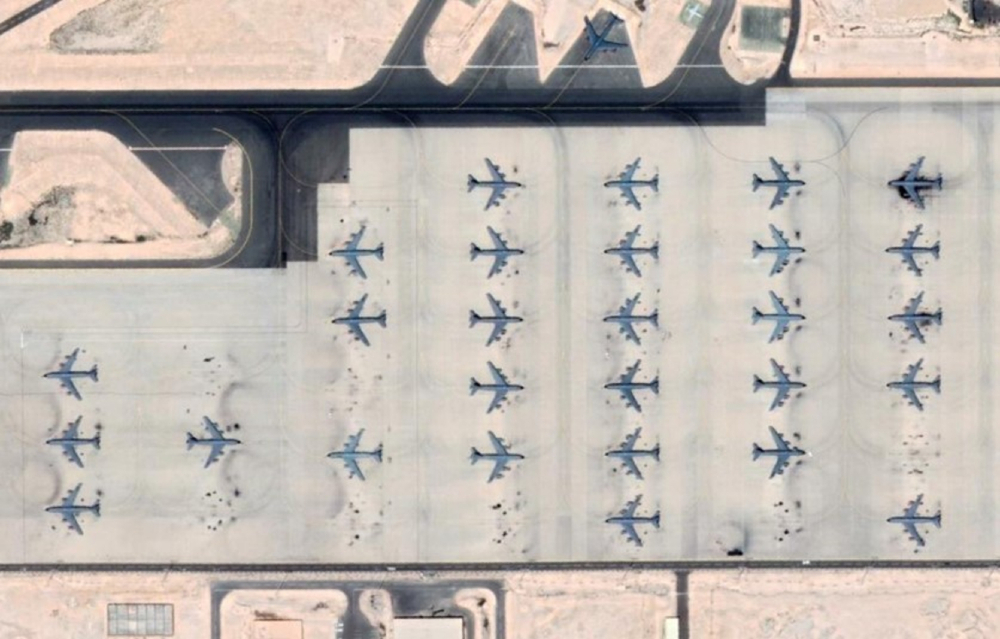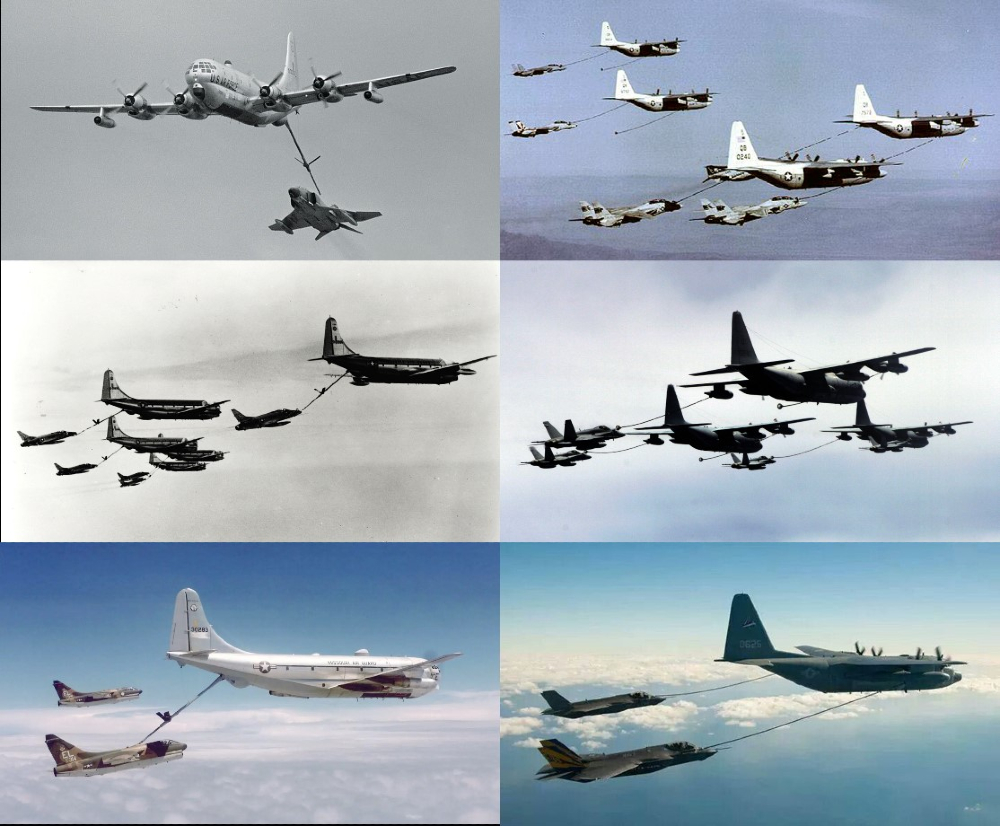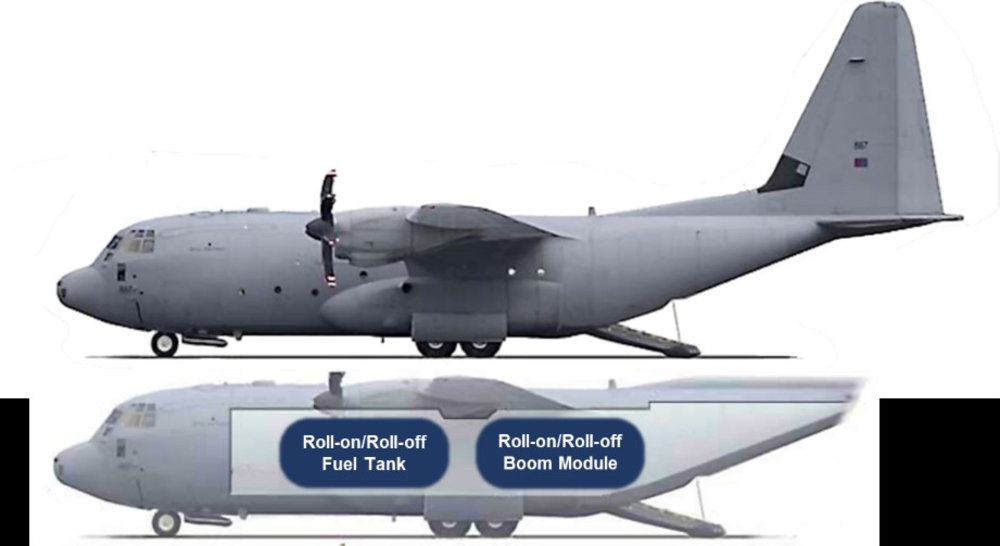Join War on the Rocks and gain access to content trusted by policymakers, military leaders, and strategic thinkers worldwide.


Is it time for the Air Force to change faster or face defeat in wartime? That’s exactly what the service’s new chief of staff, Gen. Charles Brown, thinks. Indeed, that sentiment is captured in the title of a new paper he released. In it he highlights what some of us already know: “Many of the requirements for capabilities that have underpinned our success were developed in the decade [when] today’s most senior leaders joined our Air Force,” and while much has changed in the world, the Air Force remains largely unchanged. He asserts, “Urgent actions are required now to secure the U.S. Air Force’s continued ability to deliver global effects on strategically-relevant timelines” by reframing means-based platform-centric debates to instead focus on effects and desired ends.
To achieve the fundamental change Gen. Brown describes, the Air Force ought to start at the fundamental beginning: The ability to project power is one of the unique foundational characteristics of the U.S. military. Known as operational reach, the distance and duration over which a force can successfully employ military mass underpins virtually all modern U.S. military doctrine, strategy, planning — and the definition of airpower. Without projection there is no power. Without power there is no credible deterrence. And without credible deterrence, instability and escalation to conflict is real.
America’s return to great-power competition requires an Air Force that can credibly reach China and Russia and operate upon arrival — anti-access/area denial is a compound for this very reason. Historically, the Air Force has obsessed over tackling the area denial problem, neglecting the fact that addressing anti-access is a precursor. To quote a former deputy secretary of defense, “In every case I know of the F-35 rules the sky when it’s in the sky, but it gets killed on the ground in large numbers.”
This extreme vulnerability is the premise that underpins a loosely defined maturing fighter concept known as agile combat employment. This entails projecting small groups of fighters forward of main airbases by island-hopping among temporary logistical nodes. While the concept has become buzzworthy in the past year as staffs work through concepts and operational units put them into practice, it’s not enough. This employment model, like most Air Force initiatives, is burdened with traditional military thinking and a failure of imagination.
Agile combat employment has the potential to deliver the most disruptive effects of anything the Air Force can do in the near term, if the service can embrace two realizations. First, solutions do not solely occur through creation — but also adaptation. Second, more time ought to be spent understanding the warfighter and operating environment to identify the correct problem to solve before rushing into a solution to the wrong problem. In this case, it’s all about fuel.
Understand the Environment
The 2018 National Defense Strategy addresses the challenges of modern operational reach via dynamic force employment and a four-layer force model that together frame a new theory of expeditionary power projection. Three of these layers — the contact, surge, and homeland defense layers — currently exist within the Air Force design construct. The remaining layer is called the blunt force. As the name implies, its purpose is to deter, delay, degrade, or deny aggression without large-scale force movement. Agile combat employment is the Air Force’s effort to develop such a capability.
Agile combat employment centers around deploying a fighter-based blunt force close enough to inject pause into an adversary’s strategic calculus (or impose cost, if needed). Creating such a strategic effect from a small tactical force requires relevance via proximity. However, the challenge to this is not insignificant. America’s two most formidable competitors — Russia and China — impart two distinct challenges to operational reach. In the European theater, American and allied bases are all vulnerable to attack by Russia because they are too close, whereas in the Pacific vast oceans and sparse terrain keep American forces too far away to project power.
This employment concept addresses both of these by focusing on combat generation inside contested anti-access areas with two basic principles. First is to turn anti-access “outsiders” into “insiders” by employing dispersed airpower that can be generated from shorter ranges inside highly contested areas because it is less reliant on fixed operating locations. Agile combat employment is lean, agile, and less predictable because it is expeditious and austere. Operational maneuver — not firepower or technology — is the predominant mechanism to negate anti-access.
The second principle of agile combat employment is the support to sustain the fuel and munitions required. This entails establishing temporary logistical nodes closer to the adversary called forward operating sites where forward arming and refueling point operations are conducted to land, refuel, and leave. Because these expeditionary locations range from small airstrips to sections of highways, the linchpin for logistics under this new employment concept is the venerable C-130 Hercules. Fighter refueling is supported by airlifting in a fuel truck or by offload from a fuel bladder from the cargo compartment of a C-130 staged nearby. Munitions are pre-staged or brought in via the same manner as fuel, though reloaded using integrated combat turns that permit concurrent refueling and weapons reloading on fighters with their engines still running. That way they can quickly get airborne again.
Unfortunately, despite the hype agile combat employment in its current form is not actually disruptive because none of it is actually new. Refueling fighters at a forward operating sites has been exercised as far back as 1984, integrated combat turns were used up through Operation Desert Storm, and landing fighters on highways is a concept straight from the Cold War. That said, there is untapped disruptive potential, but it requires knowing more about the logistics of fuel.
Understand the Fuel
Fueling an all-jet fleet requires a vast effort — a twin-engine fighter in full afterburner burns over 2,000 pounds of fuel per minute. Accordingly, fuel consumes a majority of agile combat employment’s logistical burden. Despite attempts to quickly get jets back in the air, roughly 80 percent of the time fighters spend on the ground and vulnerable to attack is due to refueling. Despite this obvious issue, people may be surprised to learn that these operational concepts do not utilize aerial refueling, even though the Air Force proved its potential 100 years ago. The reason is important to understand because it actually has nothing to do with fighters — and everything to do with bombers immediately following World War II.
At the advent of the Cold War, the nuclear bomber became the preeminent element of military power. To extend operational reach from the United States all the way to the Soviet Union, the Air Force sought to develop a jet-powered, aerial-refuelable nuclear bomber. The initial probe-and-drogue system proved great for fighters, but unusable for bombers. This led to the aerial boom, which was incorporated on the KC-97 Stratofreighter transport-derived tanker and new jet-powered tanker that was the Air Force’s top priority at the time — the KC-135 Stratotanker. These tankers were designed to refuel the B-47 Stratojet and another slightly slower jet-powered bomber twice the range and triple the payload — the B-52 Stratofortress.
By the 1960s the Air Force had roughly one tanker for every bomber to support its nuclear projection capability, and also a conventional force structure based on distributed mass with 4,000 thirsty short-range jet fighters. The Vietnam War exposed the stress of aerial refueling an all-jet Air Force, which led to the development of the much larger KC-10 Extender to augment the KC-135 fleet. The Air Force is currently fielding the KC-46 Pegasus, but it arguably does not solve most of the Air Force’s tanker issues. Aerial refueling remains the most underappreciated and stressed component of U.S. military logistics, despite the United States having the largest tanker fleet in the world. That’s not the problem though.
Understand the Problem
Today’s bomber, fighter, and tanker force structure relationship is essentially unchanged from when it was conceived 70 years ago to support bomber projection from faraway bases — not fighters. Because of this, every current Air Force tanker has been a derivative of an existing commercial aircraft and even the future KC-Y tanker is already projected to be the same. And because they are all commercial derivatives, they are constrained to operate from airport-like mature airbases with long runways.
While a valid premise in the past, this is a strategic flaw when applied in the modern world and a flaw present in virtually all modern tanker requirements studies — assumed impunity from attack. These capacity drills ignore the vulnerability of assembling groups of tankers on a large ramp at an airbase in theater. Why fight a formation of F-35s when it’s more economical (and effective) to simply destroy the airbase — and why attack a fighter airbase when it’s far more imposing to destroy the tanker airbase and ground an entire theater of airpower?

Figure 1: A fleet of forward-deployed KC-135s are a permanent fixture at Al Udeid Air Base, Qatar. (Source: Google Earth)
This airfield requirement and threat from attack mean that the Air Force’s fleet of strategic inter-theater tankers cannot be “insiders” and are therefore not included in agile combat employment operating concepts. However, basing tankers as “outsiders” from anti-access threats creates a logistical Catch-22: Tankers are farther away, necessitating more fuel, which requires more tankers that the Air Force already said it doesn’t have. This is why forward-staging land-based fuel is a critical element of agile combat employment.
The harsh reality is that in its current construct, agile combat employment shackles Air Force fighters to the bounds of earth every hour and a half due to the lack of an intra-theater tactical tanker — a limitation that undermines any credible deterrence this blunt force is trying to achieve.
Relying on a 70-year-old refueling paradigm with a 40-year-old operating concept is hardly the way to implement the National Defense Strategy. It’s certainly not innovative. The Air Force needs an “insider tanker” for intra-theater tactical refueling that is tailor-made for expeditious operations in austere airfields. That’s usually where requirements-focused solution seeking ends, but it’s actually not the real problem. The real problem is this: The Air Force needs an “insider tanker” that does not even exist on paper and that the service likely could not afford anyway.
Innovation Through Adaptation
The solution is not to develop a new tanker, but to develop a new capability. To achieve this, the Air Force needs to think less like the ultra-rich Tony Stark and more like the resource-constrained MacGyver. Innovation often elicits thoughts of invention and creation — but it also comes from adaptation. To quote Michèle Flournoy, “What can we do in the next five years with what we have, but use it differently. … It’s really about changing our mindset and how we imagine using what we have.”
The Air Force may not have enough tankers, but there is something it does have in excess, whose Korean War design requirements also happen to be nearly identical to the attributes required for a tactical tanker capable of supporting agile combat employment — the C-130 Hercules. It so happens that while only a few allied countries have tankers, almost everyone has C-130s. 2,400 C-130s in 70 variants have been built, and there are currently over 400 of the latest C-130J in service across 18 nations.
While it might seem unusual to refuel jet fighters with propeller-driven tankers it’s actually quite common. In fact, the Marine Corps operates a tanker variant of the C-130, though they are drogue systems not compatible with Air Force fighters. While the aerial boom requirement is an engineering constraint that bounds solutions, the attributes of the C-130 and its large cargo hold provide ample opportunity to innovate.

Figure 2: Air Force KC-97 (left) and Marine Corps KC-130 (right). Propeller-driven tankers aerial-refueling multiple generations of U.S. jet fighters. (Source: U.S. Air Force and U.S. Navy)
Agility Boom
The Air Force should host an open competition for companies to develop a modular roll-on/roll-off aerial boom system for the C-130: Agility Boom. This competition would be similar to Agility Prime, the Air Force’s flying car competition, with one distinction. Instead of using competition to accelerate the commercial market’s body of engineering knowledge, Agility Boom would instead use competition to rapidly identify and field an innovative solution. This is not more demonstrating or prototyping. Rather, it’s an innovative approach to developing an innovative solution with a sense of urgency that will actually reach the warfighter. It should be publicized in a way that is open and transparent to the warfighter, the taxpayer, American allies — and America’s adversaries.

Figure 3: Proposed Agility Boom elements on a C-130. (Image by the author)
To lower the barrier of entry and increase the number of participants, the competition should be simplified by breaking it into two engineering problems. One element of the competition would be to develop a develop a roll-on/roll-off boom module, while the other element of the competition would be to develop a new roll-on/roll-off fuel tank. Compared to other bleeding-edge technology efforts, neither of these are hard problems to solve. The essence of a roll-on/roll-off capability is that a cargo plane is temporarily adapted for other uses by leveraging its cargo hold with modular missionized pallets. This approach has been used on the C-130 for years and has transformed the cargo plane into everything from an intelligence collection platform to a submarine hunter.
 Figure 4: 3,600-gallon Benson Tank (left and center) or twin 1,800-gallon fuel pallets (right). Both increase the maximum fuel by 40 percent. (Source: Air Force/Navy/Public Domain)
Figure 4: 3,600-gallon Benson Tank (left and center) or twin 1,800-gallon fuel pallets (right). Both increase the maximum fuel by 40 percent. (Source: Air Force/Navy/Public Domain)
Palletized fuel is not a new concept either. In the days before the C-130 could aerially refuel, to extend its range it used to carry a palletized 3,600-gallon fuel tank. There are current commercial offerings that utilize twin 1,800-gallon palletized tanks. A fuel tank this size provides a 40 percent fuel increase to a fully fueled external-tanked C-130’s capacity. For perspective, this tank alone has enough fuel to extend the range of a formation of F-22s an additional 500 miles. A fully fueled C-130 with this tank could provide enough fuel to reduce the dependency on the current tanker fleet and without consuming the 40-foot cargo compartment as transporting an entire R-11 military fuel truck does. A C-130 will ultimately carry less fuel than a traditional tanker, but it also burns considerably less fuel. Because of this, two C-130s almost equal a KC-135’s worth of fuel capacity and fuel burn, reinforcing the notion of distributed logistics supporting agile combat employment’s distributed airpower premise.
 Figure 5: C-130s carry less fuel than other tankers, but they also burn it at a comparatively lower rate. (Image by the author)
Figure 5: C-130s carry less fuel than other tankers, but they also burn it at a comparatively lower rate. (Image by the author)
ACE in the Hole
Pessimists will quickly discount this idea as an invisible replacement for jet tankers and optimists will see it as a panacea, but it’s neither. Realists know something should be done, and warfighters know that creating multiple options for decision-makers ultimately creates multiple dilemmas for the adversary.
Secretary of Defense Mark Esper wants the Department of Defense to be bolder and promote a culture of taking greater risks. At the same time, senior leaders continue to lament the struggle to acquire and scale innovative technology in the Department of Defense. However, they have it wrong. Instead, they should be asking about how to scale solutions, not technology — and how to do it with a sense of urgency. Disruptive and effective solutions do not always have to require clean-sheet designs and bleeding-edge technology that require decades of research to develop. For less than the cost of a single fighter, the Air Force can increase the operational reach of all of its fighters.
Agile combat employment introduces enough logistical challenges — fuel need not be one of them. Agility Boom is a proposal to address this problem, though specifics regarding competition, engineering constraints, specific technical issues, and system integration are details in a future that does not yet exist. The Air Force should first be committed to building a credible blunt-force layer to support the National Defense Strategy. Otherwise, it does not matter how technologically advanced a force is on paper — tactical brilliance with no operational translation is the most expensive path to strategic atrophy. Accelerate change or lose.
Mike Benitez is an officer with over two decades of service in both the U.S. Marine Corps and U.S. Air Force. He has served in various operational, training, and staff positions, as well as military fellowships in the Defense Advanced Research Projects Agency, Congress, and Silicon Valley. The views expressed are those of the author and do not necessarily reflect the official policy or position of the Department of the Air Force or the U.S. government.
Image: Department of Defense